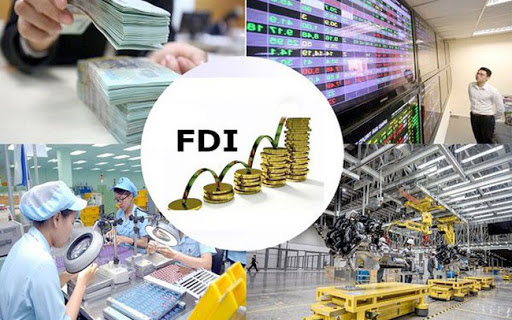Viet Nam prepares to welcome fourth FDI boom
VGP - Viet Nam has been well-prepared for a fourth boom of foreign investment in the Southeast Asian nation, led by the capital influx in 2023 thanks to effective economic diplomacy work, investment promotion and business environment improvement, said Minister of Planning and Investment Nguyen Chi Dung.

Illustration photo
Impressive FDI attraction
In 2023, despite difficult economic context, Viet Nam achieved relatively impressive FDI attraction.
Specifically, the total registered investment capital reached a record high of US$36.6 billion, up 32.1 percent from 2022. Meanwhile, FDI disbursement was also impressive, setting new record of US$23.18 billion, up 3.5 percent over 2022.
Investment projects had better quality. The majority of new projects was in the processing and manufacturing sector, accounting for 64.2 percent. Many large-scale high-tech projects registered in electronics, semiconductor production, supporting industries and advanced technological application.
Minister Nguyen assessed that the sharp surge in FDI capital into Viet Nam in 2023 came as a result of economic diplomacy activities by the Party and Government leaders, creating a favourable premise for fostering cooperation activities in 2024.
Building on the achievements gained in 2023, Viet Nam has great opportunities in attracting investment as the country had experienced after joining the World Trade Organization (WTO). But the difference is that at this time, Viet Nam has many opportunities to attract high-quality capital into new industries.
Viet Nam is regarded an attractive and safe destination as evidenced by ongoing wave of large investment projects into technology, electronics and other fields in Viet Nam.
Attractive investment destination
In 2024, in the context of the global FDI slowdown, Viet Nam is trying to implement effective solutions to attract high-quality FDI flows, including preparing conditions to lure investment projects in the semiconductor supply chain.
As the semiconductor value chain is gradually shifting to Southeast Asian countries, Viet Nam has all the necessary conditions and factors to develop the semiconductor industry such as a stable political system and a favorable geographical location, attractive investment incentives, abundant technical and technological human resources, and increasingly developing digital infrastructure.
The Vietnamese government is highly determined to pursue and develop the semiconductor industry and more and more large corporations in this industry have come to the country.
Especially, the U.S. President's commitment and support for Viet Nam to join global high-tech value chains and chip and semiconductor industries are expected to open up great opportunities for Viet Nam to enter global high-value production networks.
Viet Nam has made right, important and decisive policies to increase investment fund for this field. The country is building the National strategy for semiconductor industry and the Human resource development project for the semiconductor industry, with the goal of training and developing 50,000 workers for the industry by 2030.
Recently, the National Assembly issued a resolution which permits the Government to craft a decree and establish an investment support fund for the high-tech industry, including the semiconductor industry, expected to be issued by mid-2024.
The Government approved National Power Development Plan VIII and established the State Steering Committee for key energy projects in a bid to provide stable and sustainable electricity for investment projects, especially high-tech and semiconductor investment projects, speed up site clearance, prepare enough clean sites in industrial parks, economic zones, and high-tech parks as well as accelerating the progress of important transportation projects connecting to seaports and airports to enhance convenience for and competitiveness of semiconductor projects.
To implement these plans, the Ministry of Planning and Investment, through the National Innovation Center (NIC), signed a cooperation agreement with the two largest U.S. chip designers, Sypnosyps and Cadence, to establish research centers and semiconductor circuit design incubators.
The Vietnamese government has been making efforts to prepare the best conditions to welcome semiconductor investors./.
